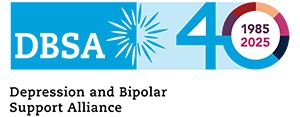What Donors Should Know About 2026 Tax Law Changes—and Why Giving in 2025 Matters
As we head into the season of giving, there are several important updates donors should be aware of. A major federal tax reform package—the One, Big, Beautiful Bill (OBBB)—was signed into law in July 2025. While some provisions extend benefits donors are familiar with, several new changes take effect on January 1, 2026, and will significantly impact how Americans give.
Below is a breakdown of what donors should know and why accelerating gifts in 2025 may be a smart strategy.
If You’re Planning a Big Gift, 2025 Is Better Than 2026
Beginning in 2026, the tax value of charitable deductions will be capped at 35%. Right now, donors in the highest tax bracket benefit from a 37% deduction, so this change reduces the value of larger charitable contributions—especially for donors who regularly give stock or other appreciated assets.
If you’re considering a significant contribution or planning to donate appreciated stock, completing those gifts in 2025 will help you secure the maximum tax benefit before the new rules apply.
A Strong Market Makes 2025 Ideal for Asset-Based Giving
This year’s economic environment makes it an especially advantageous time to give appreciated assets:
-
The S&P 500 is up more than 16% year-over-year and 94% over the last five years.
-
The global cryptocurrency market has risen to $3.46 trillion, with Bitcoin up 12% year-to-date.
-
Many donors have seen strong gains across their portfolios.
At the same time, elevated inflation means many households have less available cash, but more appreciated assets that can be donated tax-efficiently.
Giving stock or cryptocurrency allows you to avoid capital gains tax while still claiming a charitable deduction. With markets at or near record highs, 2025 may offer the most favorable conditions for making asset-based gifts before deduction values tighten next year.
A New “Floor” on Charitable Deductions Starts in 2026
Beginning in 2026, donors who itemize will only be able to deduct charitable gifts above 0.5% of their Adjusted Gross Income (AGI).
For example:
-
A donor with a $200,000 AGI will lose the tax benefit for the first $1,000 they give each year.
-
Only contributions above that amount will qualify for a deduction.
This makes giving slightly less tax-efficient and may especially affect donors whose annual giving does not exceed the new threshold.
Gifts made before December 31, 2025, avoid this rule entirely. Donors may also wish to “bunch” several years of giving into 2025 to maximize their tax benefit under the current rules.
A Universal Charitable Deduction Returns in 2026—With Important Limits
For the first time since 2021, non-itemizers will be able to deduct charitable gifts again:
-
$1,000 for individuals
-
$2,000 for couples filing jointly
However, not all gifts qualify.
Donations to donor-advised funds (DAFs) and some private foundations are excluded.
Only direct cash gifts to nonprofits will count toward this deduction.
If you typically give through a DAF and hope to use the universal charitable deduction in 2026, your qualifying gifts will need to go directly to charities, not to your DAF.
More Individuals Will Stop Itemizing in 2026
The OBBB extends and increases the standard deduction:
-
$15,750 for single filers
-
$31,500 for joint filers
Higher automatic deductions mean fewer households will itemize, which also means fewer donors will receive a tax benefit for charitable giving.
Additional tax law changes also push more taxpayers away from itemizing:
-
An expanded SALT deduction cap of up to $40,000 for those earning under $500,000
-
A new additional $6,000 standard deduction for seniors starting in 2025
-
Permanently extended income tax brackets
With fewer people itemizing, 2025 may be the last year some donors are able to claim a charitable deduction at all.
Seniors Have New Opportunities to Give Tax-Efficiently
Starting in 2025, individuals aged 65+ will receive a significantly higher standard deduction—meaning even fewer seniors will itemize next year.
However, seniors also retain important giving advantages:
-
Individuals 70½ and older can make Qualified Charitable Distributions (QCDs) of up to $108,000 from their IRAs in 2025.
-
For donors 73+, QCDs also satisfy their Required Minimum Distribution (RMD).
If you are a senior looking to reduce taxable income, QCDs may be especially valuable before the new deduction limits begin.
What Donors Should Do in 2025
Here are a few strategic steps to consider:
1. Give appreciated stock, crypto, or other assets this year
These gifts are often the most tax-efficient—especially in a strong market.
2. Consider “bunching” multiple years of giving into 2025
Accelerating future gifts now may maximize your deductions before the 35% cap and the 0.5% AGI floor take effect.
3. If you use a DAF, plan for direct giving in 2026
The universal charitable deduction only applies to direct gifts to nonprofits.
4. Talk with a financial or tax advisor
Your best giving strategy depends on your unique financial situation.
Why Giving in 2025 Matters
Because of the federal tax changes taking effect on January 1, 2026, making a gift by December 31, 2025 is an especially smart idea—particularly if you’re giving appreciated stock or planning a larger contribution.
This year’s gifts simply go further—for you, and for DBSA’s mission to provide hope, help, support, and education to improve the lives of people who have mood disorders.
Legal Disclaimer
The above information is not professional tax or legal advice. Please consult with your financial advisor or tax professional for guidance based on your specific situation.
DBSA is a not-for-profit Illinois corporation qualified under section 501(c)(3) of the Internal Revenue Code. All gifts are deductible based on federal IRS regulations.
DBSA’s federal tax identification number (FEIN) is 36-3379124.



